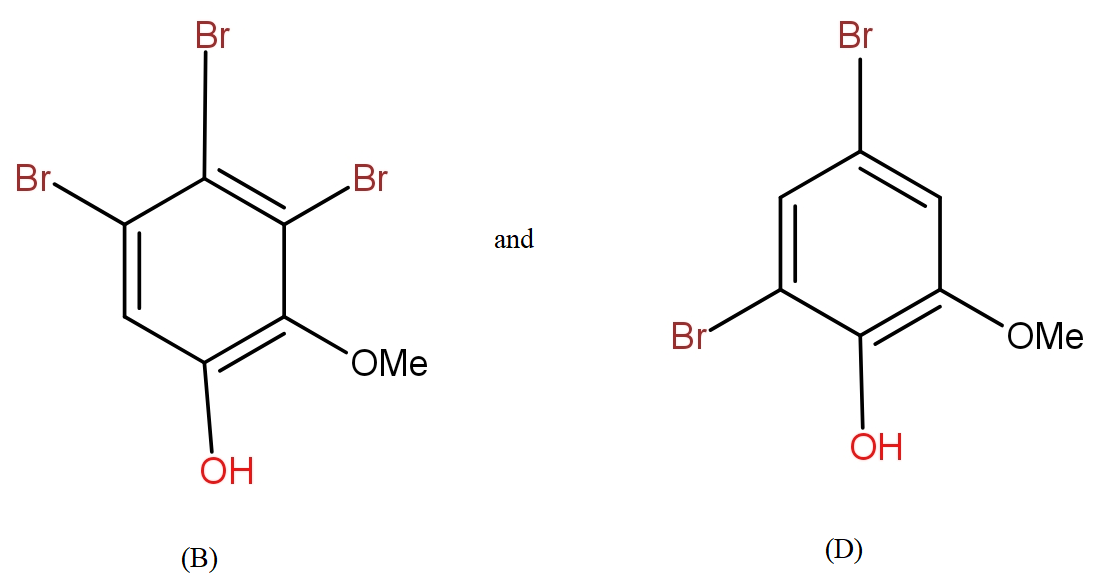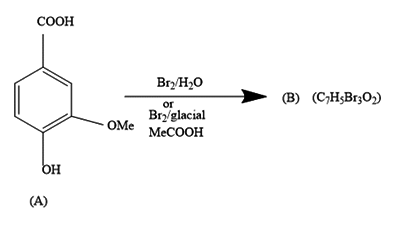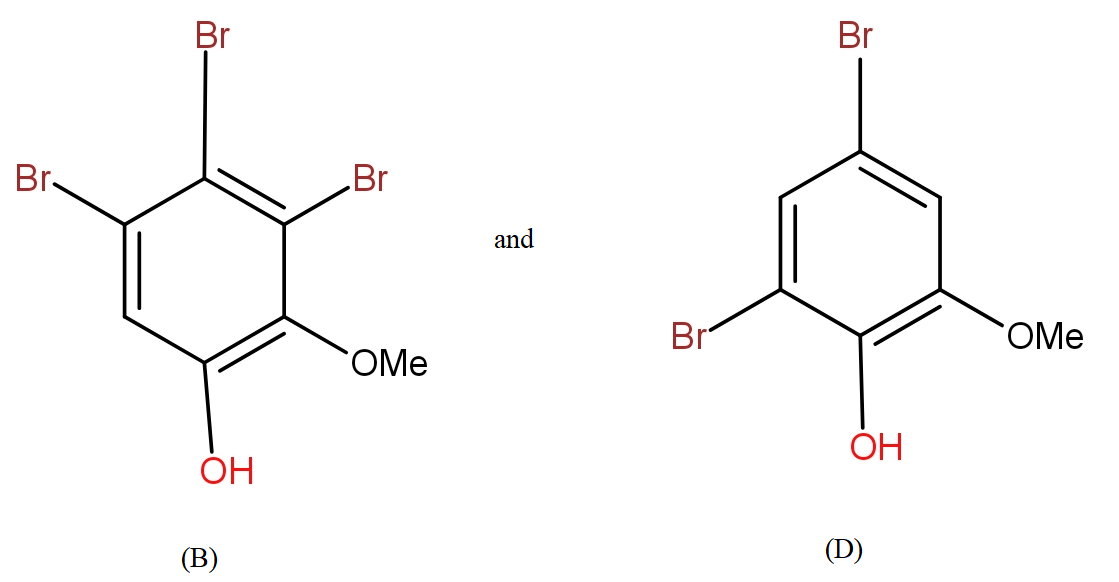
Answer
471k+ views
Hint : The reaction is about bromination of substituted benzoic acid. When we add bromine water to 3-methoxy-4-hydroxy benzoic acid, Bromine atom gets substituted on the benzene ring in accordance with the carboxylic group.
Complete answer :
Let us move step by step to the answer.
In the first reaction, we are given a reaction in which bromine water is added to 3-methoxy-4-hydroxy benzoic acid. The product formed contains seven carbon atoms, five hydrogen atoms, three bromine atoms and two oxygen atoms.
It comes under chemical reactions of carbonyl compounds. As we all know benzene is much stable due to resonance that it does not undergo addition reactions. It undergoes a substitution reaction in which H atom gets replaced by the incoming group.
The COOH group being the most dominating will decide the substitution of bromine atoms.
Further, from the options only, it is clearly visible that the compound in option a.) contains the equal number of atoms of each type as given in question in product (B). The molecular formula supports the answer a.).
Even for the second reaction, the option a.) shows an equal number of atoms.
So, the option a.) is the correct answer.

Note :
The COOH group is meta directing in nature. So, it will direct the incoming bromine atoms to its meta position. While the OH and OMe groups are ortho and para directing in nature. In that option b.) could also be the answer but here molecular formula does not support it.
Further, decarboxylation with bromine water is uncommon since it is an oxidising agent.
Complete answer :
Let us move step by step to the answer.
In the first reaction, we are given a reaction in which bromine water is added to 3-methoxy-4-hydroxy benzoic acid. The product formed contains seven carbon atoms, five hydrogen atoms, three bromine atoms and two oxygen atoms.
It comes under chemical reactions of carbonyl compounds. As we all know benzene is much stable due to resonance that it does not undergo addition reactions. It undergoes a substitution reaction in which H atom gets replaced by the incoming group.
The COOH group being the most dominating will decide the substitution of bromine atoms.
Further, from the options only, it is clearly visible that the compound in option a.) contains the equal number of atoms of each type as given in question in product (B). The molecular formula supports the answer a.).
Even for the second reaction, the option a.) shows an equal number of atoms.
So, the option a.) is the correct answer.

Note :
The COOH group is meta directing in nature. So, it will direct the incoming bromine atoms to its meta position. While the OH and OMe groups are ortho and para directing in nature. In that option b.) could also be the answer but here molecular formula does not support it.
Further, decarboxylation with bromine water is uncommon since it is an oxidising agent.
Recently Updated Pages
Fill in the blanks with suitable prepositions Break class 10 english CBSE

Fill in the blanks with suitable articles Tribune is class 10 english CBSE

Rearrange the following words and phrases to form a class 10 english CBSE

Select the opposite of the given word Permit aGive class 10 english CBSE

Fill in the blank with the most appropriate option class 10 english CBSE

Some places have oneline notices Which option is a class 10 english CBSE

Trending doubts
Fill the blanks with the suitable prepositions 1 The class 9 english CBSE

How do you graph the function fx 4x class 9 maths CBSE

When was Karauli Praja Mandal established 11934 21936 class 10 social science CBSE

Which are the Top 10 Largest Countries of the World?

What is the definite integral of zero a constant b class 12 maths CBSE

Why is steel more elastic than rubber class 11 physics CBSE

Distinguish between the following Ferrous and nonferrous class 9 social science CBSE

The Equation xxx + 2 is Satisfied when x is Equal to Class 10 Maths

Differentiate between homogeneous and heterogeneous class 12 chemistry CBSE








